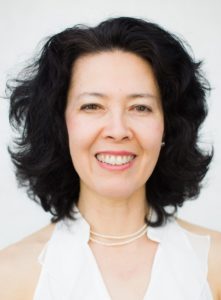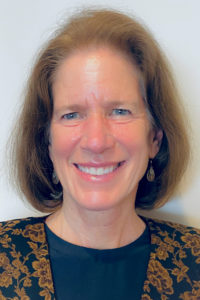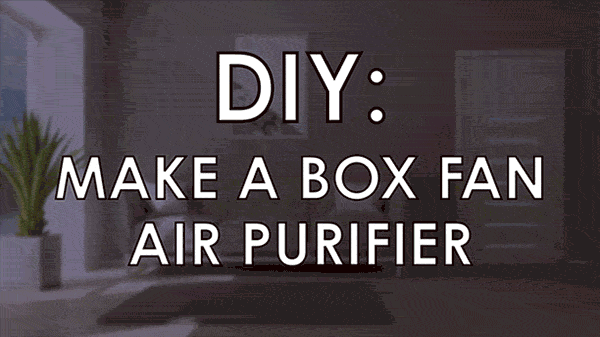In this episode (#77) we talk with two experts on the dangers of exposure to wildfire smoke. Our guests are:

Sumi Hoshiko
Sumi Hoshiko is an environmental epidemiologist with the Environmental Health Investigations Branch, Center for Healthy Communities, in the California Department of Public Health. She has conducted research on health effects related to climate change, including wildfires and heat waves. Just recently her research has been cited in a New York Times online article on the California wildfires. She is currently the principal investigator of a research study funded by CAL FIRE that will examine the public health impacts of prescribed fire. Other areas of work have involved investigation of a variety of environmental exposures and health conditions, including tobacco smoke, chromium, perchlorate, radiation, cancer clusters, and asthma. She holds a Master’s degree in Public Health from UC Berkeley and a bachelor’s degree from Oberlin College.

Dr. Janice Prudhomme
Dr. Janice Prudhomme is a Public Health Medical Officer (PHMO III) who works in the Environmental Health Investigations Branch (EHIB) within the Center for Community Health at the California Department of Public Health (CDPH). Dr. Prudhomme is trained in Internal Medicine and Board Certified in Occupational and Environmental Medicine, having completed a fellowship at UCSF and a Master’s degree in Public Health (MPH) at UC Berkeley. Following initial work in clinical occupational medicine, she transitioned to public health roughly 2 decades ago. She has served as a Public Health Medical Officer in the Occupational Health Branch at CDPH and subsequently led Cal/OSHA’s Medical Unit. She also served as the Branch Chief for EHIB from 2014-2015. Her interests and expertise are broad-based across many occupational and environmental topics and hazards, including infectious agents, chemical exposures and physical hazards, including heat stress and wildfire smoke exposures. Current projects include updating EHIB’s educational documents pertaining to wildfire smoke and the intersection with COVID-19.

DIY Room Filter
Terms Mentioned
Particulate Matter (PM)
Size Matters with PM:
PM 2.5 Based on size, particulate matter is often divided into two main groups:
- The coarse fraction contains the larger particles with a size ranging from 2.5 to 10 µm (MICRO METER) (PM10 – PM5).
- The fine fraction contains the smaller ones with a size up to 2.5 µm (PM5). The particles in the fine fraction which are smaller than 0.1 µm are called ultrafine particles.
Air Cleaning Devices for the Home
https://ww2.arb.ca.gov/resources/fact-sheets/air-cleaning-devices-home
FROM EMERGENCY PREPAREDNESS OFFICE (EPO):
Wildfires
If you have an urgent health condition or medical need call 911.
The following links can provide additional helpful information:
The latest news from the California Office of Emergency Services: CalOES.ca.gov
Information on current wildfires: California Department of Forestry & Fire Protection
Current air quality information: California Air Resources Board
Map of current air conditions: AirNow.gov
More information about wildfire smoke dangers: Ready.gov
More information on wildfire prevention and safety: Centers for Disease Control
Wildfire Smoke Considerations for California’s Public Health Officials PDF
Wildfire Cleanup Considerations for California’s Public Health Officials PDF
For the latest wildfire information in your area, monitor your local media, including television, radio and internet.
From OHE (Office of Health Equity) webpage:
COVID-19, Wildfires, and Wildfire Smoke
The COVID-19 pandemic overlaps with the wildfire season in California. The populations most vulnerable to COVID-19 overlap with the populations most exposed to air pollution and its respiratory and cardiovascular effects on health. The populations may also overlap in terms of being more vulnerable to having adverse health impacts from wildfire smoke exposure (while not being more likely to be exposed to the smoke itself). Most actions that health experts recommend for protecting communities from wildfire smoke remain the same, but some special considerations need to be made during the pandemic. Information on wildfire, wildfire smoke, and COVID-19 can be found below:
- Centers for Disease Control and Prevention (CDC) Guidance
- Wildfire Smoke and COVID-19– CDC guidance and information on how wildfire smoke can affect you and your loved ones during the pandemic and what you can do to protect yourselves.
- Public Health Strategies to Reduce Exposure to Wildfire Smoke during the COVID-19 Pandemic– information about wildfire preparedness and response during the ongoing COVID-19 pandemic. It should be used in conjunction with the 2019 revision of Wildfire Smoke: A Guide for Public Health Officials. (guidance document on wildfire smoke, interagency effort led by US EPA)
- Wildfire Smoke and COVID-19: Frequently Asked Questions (FAQs) and Resources for Air Resource Advisors and Other Environmental Health Professionals | Español
- COVID-19 Considerations for Cleaner Air Shelters and Cleaner Air Spaces to Protect the Public from Wildfire Smoke
- FAQs for Wildland Firefighters Working During the COVID-19 Pandemic
- Open Burning During the COVID-19 Pandemic
- Also see US EPA’s guidance on COVID-19, Wildfires, and Indoor Air Quality
- General CDPH Wildfire and Wildfire Smoke Guidance
- National Oceanic and Atmospheric Administration (NOAA) – Hazard Mapping System Fire and Smoke Product Current Analysisis maintained by NOAA to produce information on fire position for use as general guidance and strategic planning. Areas of smoke are analyzed and added daily during daylight hours, as visible satellite imagery becomes available.
- British Columbia Center for Disease Control (BCCDC) Guidance for Wildfire Smoke and COVID-19 [PDF]provides guidance for how to stay healthy in smoky conditions in the context of COVID-19.
Cal EPA Guidelines:
https://www.airnow.gov/wildfire-smoke-guide-publications/
| Wildfire Smoke Guide and Factsheets Publications | AirNow.gov
Wildfire Smoke: A Guide for Public Health Officials. This document, originally developed by the California Air Resources Board (CARB) and the California Department of Public Health (CDPH), is designed to help local public health officials prepare for smoke events, to take measures to protect the public when smoke is present, and communicate with the public about wildfire smoke and health. www.airnow.gov |
PEHSU (Pediatric Environmental Health and Safety Unit) from UCSF:
https://www.pehsu.net/Wildfires_and_Smoke_Resources.html
(VERY IMPORTANT as children fall into the high risk groups for increased health effects due to wildfire smoke exposures)
| Wildfires and Smoke – PEHSU
This webinar was presented by Julie Fox, PhD, MHS, Ambient Air Epidemiologist of the Washington Department of Health (PEHSU Region 10) on April 17, 2019. Web-on-demand available. Click here to view. www.pehsu.net |
Cal/OSHA (for worker health and safety):
https://www.dir.ca.gov/title8/5141_1.html
(The standard to protect workers from wildfire smoke)
| California Code of Regulations, Title 8, Section 5141.1. Protection from Wildfire Smoke.
(2) Engineering Controls. The employer shall reduce employee exposure to PM2.5 to less than a current AQI of 151 by engineering controls whenever feasible, for instance by providing enclosed buildings, structures, or vehicles where the air is filtered. www.dir.ca.gov |
Emergency Response
Resources
- Employers and workers who have questions or need assistance with programs to protect workers exposed to smoke from wildfires can call Cal/OSHA’s Consultation Services Branchat 800-963-9424. Complaints about workplace safety and health hazards can be filed confidentially with a Cal/OSHA district office.
- For more information on Cal/OSHA’s requirements for respirator use, see Respiratory Protection in the Workplace: A Practical Guide for Small-Business Employers. Page 8 of this document contains a simple flowchart that summarizes the requirements for filtering face piece respirators.
- For additional resource on respiratory protection from the California Department of Public Health, see Respiratory Protection – General Resources
- Protecting indoor workplaces from wildfire smoke with building ventilation systems and other methods
- Cal/OSHA’s webpage on respiratory protection during fire cleanup and selecting the correct respirator
- Cal/OSHA’s requirements for Respiratory Protection, title 8, section 5144
- Cal/OSHA’s requirements for Control of Harmful Exposure to Employees, title 8, section 5141
Other Resources
CA Air Resources Board:
This is information on indoor air cleaners for the public.
| Air Cleaner Information for Consumers | California Air Resources Board
Not all air-cleaning devices are appropriate for home use; some are known to be harmful to human and animal health. Ozone generators, which are portable or in-duct air cleaners that intentionally create ozone, can produce levels that are much higher than health-based standards. There are companies that try to sell the idea that breathing ozone is actually healthy, but there are 40 years of … ww2.arb.ca.gov |

